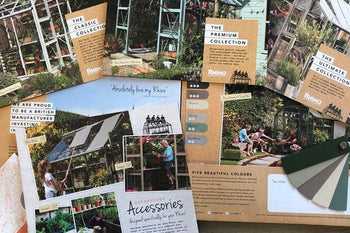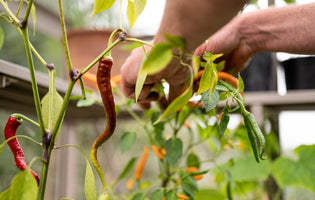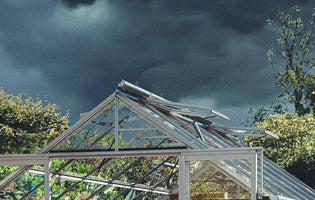February in the garden can really take a turn for the better. A few less rainy days, a little more time outside and snowdrops! They really are a sight to behold after a long winter. As much as I love the traditional white and green snowdrop, I also love to spot a yellow one too. Galanthus ‘Wendy’s Gold’ and ‘Plicatus Madeleine’ are two of my Favorite yellow tinged varieties along with the miserably hilarious looking ‘Grumpy’ with well recognized nodding white flowers, two green spots and inverted V, making it look like a grumpy face! Don’t forget when they finish bloomin'g, dividing them while they are ‘in the green’ is the best way to propagate snowdrops.
It’s not the snowdrops or even the bulbs starting to push up through the soil exciting me in February - it is of course - starting to sow some seeds. What seems like a simple gardening task is so good for wellbeing. Sowing seeds brings so much hope and excitement after a long winter and more so towards the end of the month, there are so many seeds to finally sow. If you are eager and have a heated propagator or a greenhouse (which you still might need to heat or insulate depending on the temperature) some seeds can be sown to get you started. Sweet peas, tomatoes, cucumbers, beetroot, spring onions, lettuce, peas and spinach are great options for sowing at this time of year. I use either seed compost or a mix of potting compost and perlite. Seeds don’t need all the nutrition in multi-purpose compost but if that’s all you have, go ahead and use it, especially for the larger seeds such as cucumbers and squash later on.
There are so many ‘how to sow seeds’ guides, so I will leave that for another time but one thing I do love doing while I sow seeds and recommend to anyone reading this to try, is to try not to rush the process. The act of seed sowing is so mindful and taking time to think about how seeds want to grow, what each type needs in order to thrive, focusing in on the moment as the seeds hit the soil, how the water gently moistens the compost and absorbing the anticipation of watching them germinate is a way to calm the mind, forget anything else apart from being in the present - all of which is so good for wellbeing.
February is a month of gently starting to get the garden in motion for the growing season, with the weather in mind of course. The first full moon of the year, also known as the snow moon, is named as such because the next month means we are most likely to see colder or even snowy conditions. So, proceed with caution and joy and thank goodness for the greenhouse!








